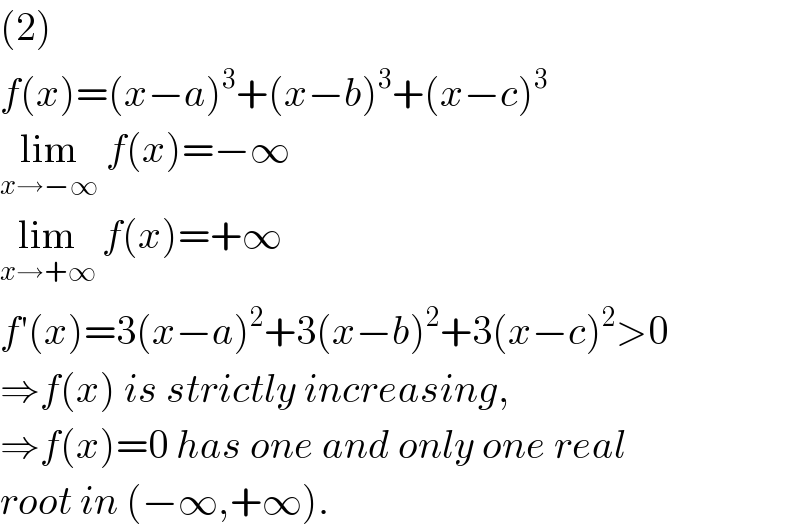
Question and Answers Forum
Question Number 73113 by TawaTawa last updated on 06/Nov/19

Commented by mathmax by abdo last updated on 06/Nov/19
![1) we have arg(z)=arg(7−3(√3)i)+arg(−1−i)[2π] ∣7−3(√3)∣ =(√(49+27))=(√(76)) ⇒7−3(√3)=(√(76))e^(iarctan(((−3(√3))/7))) ⇒ arg(7−3(√3)) =−arctan(((3(√3))/7)) −1−i =(√2)(−(1/(√2))−(i/(√2))) =(√2)e^(i((5π)/4)) ⇒arg(z)=((5π)/4) −arctan(((3(√3))/7))[2π]](Q73118.png)
Commented by TawaTawa last updated on 06/Nov/19

Commented by mathmax by abdo last updated on 06/Nov/19

Answered by mr W last updated on 06/Nov/19

Commented by TawaTawa last updated on 06/Nov/19

